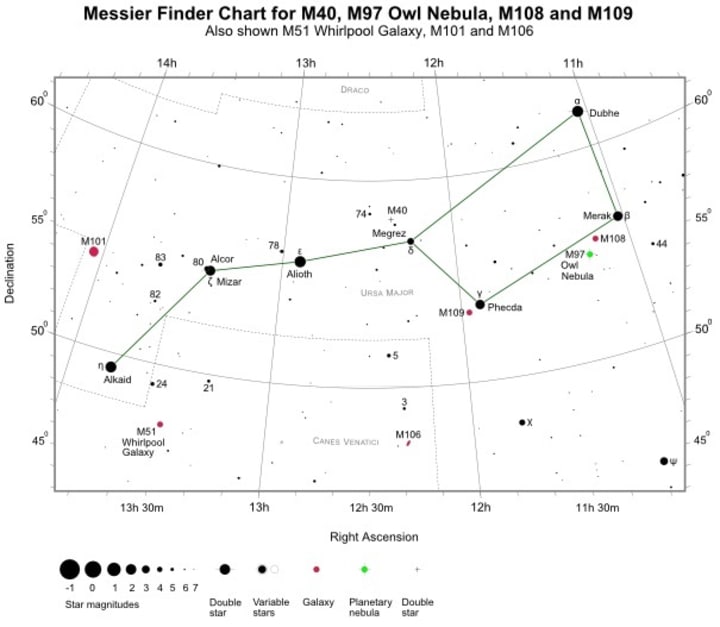A bright and dazzling death of a star
A supernova shines in the whirlpool galaxy these nights; you can see it with a small telescope.

These nights, the night sky hosts a new star that can be observed with the help of a small telescope. This star is actually the death of a massive star that, over 85,000 years ago, scattered the building blocks of everything in its glorious end.
All the elements of our bodies were created in the heart of stars and were once inside a star. We are made of stardust.
You may have heard one of the various versions of the above statement, mainly attributed to Carl Sagan, the renowned American science popularizer and astronomer.
The point that some of us have yet to consider is that this statement and quote is not an emotional or poetic expression.
This is a scientific fact.
The materials within your body, forming each of your organs and your surrounding environment, once inside a star and, in the truest sense of the word, were in the heart of a star.
We live on a planet that contains a combination of heavy elements within itself. Our bodies are composed of various compounds, primarily based on carbon compounds. Iron flows in our blood; without heavier elements, neither we nor our Earth would exist.
But where have these elements formed?
To answer this question, we need to go back in time.
About 14 and a half billion years ago, when our universe came into existence, probably during a climatic event called the Bigbang, the first elements formed were hydrogen and a small amount of helium.
There was no other element in the universe until vast clouds of hydrogen came together and, under gravitational pressure, gradually gave birth to the initial stars.
In the core of a star (like our Sun), hydrogen, under gravitational pressure, initiates the fusion process and transforms into helium (the next heavy element). When the primary fuel in the core runs off, this fusion furnace is turned off; gravitational pressure again causes the creation of another layer of the nucleus in the center, which, this time, converts helium into the next heavy element.
The fusion process, which transforms lighter elements into heavier ones, along with energy release, is only possible for elements lighter than iron. When it reaches iron, instead of releasing energy, the fusion process accompanies energy acquisition, and this is where the energy release process from fusion turns into fission. Heavier elements need to be split to release lighter elements and energy, which happens inside nuclear reactors on Earth.

In the core of a star like the Sun, all elements heavier than hydrogen and lighter than iron are produced by fusion. If carbon exists in our bodies, this carbon has definitely and certainly been made in the heart of a star and scattered in space and has been employed in the formation of our solar system and has entered our bodies in that process.
But how have elements heavier than iron come into existence?
They come into existence from the heart of some of the most dazzling explosions in the universe.
These explosions, known as supernovas, are one of the main producers of these elements.
One kind of this supernova (type II supernova) is the glorious and awe-inspiring deaths of massive stars. If the mass of a star is more than eight times the mass of our Sun, ultimately, in its prominent death, it will turn into a supernova.
In these conditions, the core of such a central star will increase in mass by one and a half times the mass of our Sun, and the radiation resulting from energy conversion in the core will no longer be able to resist gravitational pressure. Gravity causes the star to collapse upon itself. The tremendous pressure in the core causes the inner core structures to break apart, leading to the star's explosion. During this explosion, heavier elements than iron are formed, scattered into interstellar space along with intense storms of matter and radiation.
Such an explosion is so terrifying and radiant that the star's death's brightness exceeds its host galaxy's overall brightness for several days. It has been a long time since a supernova has been observed in our galaxy. The last time our galaxy witnessed the illumination of a supernova was in the year 1604 AD. However, the most famous example of a supernova is the one from 1054. The supernova that exploded in the constellation Taurus was so brilliant that it could be seen in the daylight sky, surpassing even the brightest celestial object after the Sun in the night sky. Reports of recording this supernova range from China to North America, and today its remnants can still be seen in the sky, known as the Crab Nebula (M1).
The study of these supernovae is extremely important for astronomers.
Now, these nights, a new supernova has been illuminated in the constellation Ursa Major. This star, named SN 2023 ixf, is actually located within a galaxy called the Whirlpool Galaxy or M101. This galaxy, located 85,000 light-years away from Earth, is one of the familiar objects in the night sky for stargazers. With a regular binocular, you can observe this galaxy in the direction of the Ursa Major constellation on a clear night. The angle of this spiral galaxy in the sky has made it an attractive subject for astrophotographers to capture it.
On May 19th, a new star was born in the arm of this galaxy. In fact, it should be said that on that night, a star ended its life and transformed into a magnificent supernova. Over the next two nights, the brightness of this supernova increased, and now it has reached a level where you can observe it with the help of a small 4.5-inch telescope.
The brightness of this star is now comparable to the brightness of the core of this galaxy, but in the coming days, it will gradually diminish.
Even if you don't have access to powerful astronomical tools, you can look towards the location of this galaxy in the direction of the Ursa Major constellation on these nights and remember that 85,000 years ago, a star scattered the seeds of life into space of the galaxy with its death, and now its light has reached us.
About the Creator
Pouria Nazemi
Freelance science journalist based in Montreal, Canada






Comments
There are no comments for this story
Be the first to respond and start the conversation.